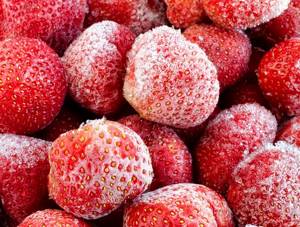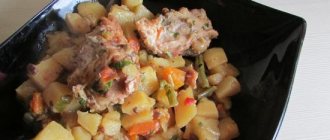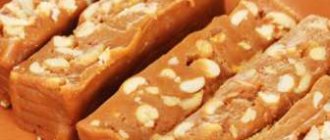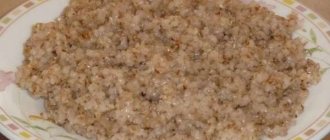Are berries good for weight loss?
Berries are not only very tasty, but also extremely healthy. They contain a lot of substances that benefit our body - vitamins, organic acids, microelements, amino acids, carbohydrates, fiber, etc. At the same time, the calorie content in berries is quite low due to the high fiber and water content in them .
The high nutritional and beneficial value, as well as the low calorie content of the berries, make them an ideal product for dietary nutrition. The effectiveness of berries for weight loss is explained by their ability to cleanse and heal the body, regulate metabolism and promote the breakdown of fatty tissue, as well as the low calorie content of berries and their ability to dull appetite. The main source of healthy calories contained in berries is fast carbohydrates, such as fructose and glucose. They are almost completely absorbed in the body and quickly processed, while they do not cause a sharp change in blood sugar levels and, therefore, are less dangerous for the figure than, for example, sucrose. Other sources of calories - proteins and fatty acids - are present in berries in small quantities.
The low calorie content of fruits and berries and the high content of nutrients in them makes these products very suitable for combating excess weight . They saturate the human body with useful substances, tone and energize it, promote good metabolism, improve health and prevent the formation of fatty tissue. That is why recently fruit and berry diets have become so popular, which, thanks to the low calorie content of berries and fruits and their benefits, help get rid of extra pounds and at the same time improve health.
The most suitable time for a berry diet is the summer and autumn periods, that is, when natural, fresh fruits ripen in our summer cottages. In winter and spring, berries sold in stores contain more nitrates and other chemicals than nutrients, so eating them is not recommended. For weight loss, you need to eat at least 500 g per day, this will allow you to lose up to 8 kg per month . The organic acids they contain promote the active breakdown of lipids - fat cells in the body, and also prevent the formation of new ones, and the low calorie content of fruits and berries when consumed leads to a decrease in the total calorie content of the daily diet.
Acai berries for weight loss
Acai berries are small, dark palm fruits native to northern Brazil. The fruits are rich in natural antioxidants.
Recently, it has been proposed to use acai berries for weight loss. Biologically active food supplements and the fruits themselves in their natural form are widely advertised and sold all over the world. In Russia you can also easily purchase this product.
There is no scientific evidence supporting the effectiveness of acai berries for weight loss. However, isolated cases of weight loss in acai users have been reported. Remember that these fruits are very high in calories (150 kilocalories per 100 grams). Their excessive consumption can even harm your figure. The calorie content of acai berries makes it necessary to limit their consumption to one serving per day.
Calorie content of berries
As mentioned above, the calorie content of berries is very low, while they are quite tasty and sweet - therefore, berries can successfully replace the usual desserts and sweets during a diet. Berries contain fewer calories and more nutrients than candies or cakes, so by replacing your usual sweets with berries, you will not only maintain your figure, but also benefit your body and health. On average, the calorie content of fruits and berries ranges from 20 to 60 kcal per 100 g - the sweeter the berry, the more calories it contains.
You can get more detailed information about the calorie content of berries and fruits from the tables below.
Berry diet
In Russia, the berry season is summer. It is advisable to plan a tasty and healthy berry diet at this time of year.
This power system has two options. The most beneficial is a two-week course of a berry diet. Use local berries for weight loss. In central Russia, such fruits are currants, gooseberries, raspberries, strawberries, and blueberries. Replace dinner with a serving of berries. You can also snack on berries several times throughout the day.
Of course, cream, sugar, and sour cream make desserts made from berries too high in calories. Therefore, when adding to berries for weight loss, only low-fat yogurt, skim milk or cottage cheese are suitable. You can eat berries in their natural form without any additives. The calorie content of berries per day in such a diet does not exceed 300 kilocalories.
If a two-week course is too long for you, then the express method is suitable. The berry diet in this case lasts only two days. But at this time you can only eat berries. Berries for weight loss are only suitable with a calorie content of up to 50 kilocalories per 100 grams. During each day of the diet, in addition to berries, you can use 1000 grams of low-fat dairy product (yogurt, kefir, milk, cottage cheese).
Calories in berries
This table shows the calorie content of berries (per 100 g of product).
The calorie content of berries is:
- cloudberry – 28 kcal;
- cranberry - 29 kcal;
- quince – 30 kcal;
- blackberries – 31 kcal;
- strawberries – 34 kcal;
- blueberries – 35 kcal;
- cherry plum – 38 kcal;
- white currant - 38 kcal;
- red currant - 39 kcal;
- dogwood – 41 kcal;
- raspberries – 42 kcal;
- black currant - 42 kcal;
- lingonberries – 43 kcal;
- gooseberries – 43 kcal;
- plum – 44 kcal;
- blueberries - 44 kcal;
- fresh rose hips - 51 kcal;
- sea buckthorn – 52 kcal;
- cherry – 53 kcal;
- cherries – 53 kcal;
- grapes – 65 kcal.
As you can see, the calorie content of cloudberries is the lowest, and the highest is that of grapes. For weight loss, as a rule, low-calorie berries are consumed - currants, raspberries, strawberries, etc.
Properties of frozen berries
How much does frozen berries cost (average price per 1 kg)?
Moscow and Moscow region.
260 rub.
Summer is not only the most long-awaited warm time of the year. It is in the summer that a unique opportunity arises to replenish the reserves of vitamins and beneficial compounds that our body needs for normal functioning using natural sources. Various types of berries are available in our latitudes from spring to late autumn. Berries, along with nuts and mushrooms, have long been part of the daily diet of the Slavs. Over time, people learned to harvest berries for future use using various methods.
In the modern food industry, the most effective way to prepare berries is considered to be the method of shock or flash freezing. This technique is considered the best because it allows you to preserve in the chemical composition of frozen berries the largest amount of useful compounds that are contained in fresh berries. True, in order to quickly freeze the berries, you will need specialized equipment, namely a refrigerator. As a rule, at home, berries are frozen using the freezer of a regular refrigerator.
Calorie content of fruits and citrus fruits
The table contains information on the calorie content of some fruits (per 100 g of product):
- lemon – 21 kcal;
- watermelon – 38 kcal;
- melon – 39 kcal;
- pineapple – 40 kcal;
- tangerine – 41 kcal;
- orange – 41 kcal;
- pear – 42 kcal;
- apricot – 44 kcal;
- peach – 44 kcal;
- apple – 44 kcal;
- kiwi – 50 kcal;
- pomegranate – 52 kcal;
- banana – 60 kcal;
- mango – 70 kcal;
- avocado – 100 kcal.
Possible harm
- Allergic reactions - like fresh berries, frozen ones can cause allergies. Therefore, allergy sufferers should adhere to all nutritional recommendations and avoid eating foods if they have previously had an allergic reaction.
- Repeated freezing - in case of accidental defrosting of fruits, repeated freezing is strictly prohibited, since most nutrients are lost, the product is subjected to rotting, decomposition and can be harmful to health. Thawed berries should be used immediately by heat treatment, simply cook compote, bake a pie, or add to a dessert dish.
- Poor-quality producer - store-bought frozen berries, if the rules of preparation, storage, and transportation are not followed, can become a source of food poisoning. Therefore, it is necessary to look at the appearance of the berries, pay attention to the absence of “snow” in the bag, terms and conditions of storage.

How to eat berries for weight loss
As mentioned above, due to the low calorie content of berries and their high content of useful and nutritious substances, they are widely used during weight loss diets. The summer season is the best time to eat berries for weight loss. Eat up to 500 g of any fresh berries every day - you can eat them as a snack between main meals and replace dinner with them, you can add milk or kefir, cottage cheese, yogurt, sour cream to them. It's also important to remember to consider the calorie content of the yogurt or sour cream you choose. Just 3-4 glasses of berries a day will help you lose 4 to 8 kg in a month. The berry diet is a refusal of unhealthy sweets and confectionery products and replacing them with berries.
The berry diet has one very pleasant side effect - increased libido. Berries and many fruits are powerful aphrodisiacs, and consuming them regularly will increase your sex drive. Berries also reduce fatigue and increase efficiency, regulate metabolism, cleanse the body of toxins and waste, strengthen blood vessels and the heart, tone up, improve mood and increase stress resistance, improve digestion, have a beneficial effect on the kidneys, vision, normalize blood sugar and cholesterol levels, fight constipation.
However, despite the great benefits and low calorie content, not everyone can use berries for weight loss . They are contraindicated for people suffering from acute diseases of the stomach and intestines, with high acidity of gastric juice, gastric or duodenal ulcers.
Berries on the daily menu
The calorie content of berries is low, but they have many benefits. Therefore, doctors do not recommend a short berry diet, but the daily use of these valuable products in the diet. Replace some sweet dishes with low-calorie berry desserts. Instead of cakes and sweets, it is better to eat 200 grams of berries with yogurt. Instead of a piece of pie - fruit and berry salad. Frozen yogurt with berries can easily replace ice cream.
Berries for weight loss can be bought fresh in the summer, and frozen in the winter season. The calorie content of berries remains the same after freezing, and vitamins and minerals are also preserved. Berries can make your menu more varied and tastier, reducing your overall daily calorie intake.
Lowest calorie fruits
Tables of low-calorie fruits for weight loss include items for every taste and income. Among them are native and exotic species:
- Lemon, calorie content 32-34 calories per 100 g. Citrus is an officially recognized store of vitamin C. Useful in spring or autumn, during the acute respiratory infections season. But restrictions need to be taken into account, especially for people with gastrointestinal problems.
- Grapefruit, 35-37 calories. The red varieties are considered the most valuable. Endowed with the ability to burn fat, suppress appetite, and remove excess fluid. A set of nutrients (including fiber) helps the functioning of the gastrointestinal tract and liver. Strengthens the immune system, the walls of blood vessels, neutralizes depression and insomnia. Sugars are absorbed slowly and make a good evening snack.
There are no citrus fruits in the tables of the most high-calorie fruits - their indicator is lower than the average values.
Your personal table of low-calorie fruits can be supplemented with tangerines, oranges (37-38 calories each), and peaches.
A separate story is watermelon (23-25 calories) and melon (38-40). These are not fruits, but melons. But they are 60-80% water (especially watermelon). Cleanses the liver, flushes the kidneys, lycopene inhibits aging. During the season, it is a mandatory dietary product, regardless of the type or severity of the diet.
Methods of use
- Adding to baked goods, as a decorative decoration for pastries, cakes, ice cream.
- Preparation of fortified drinks - compotes, fruit drinks, yoghurts, jelly.
- Preparation of sweets - marmalade, confiture, jam, preserves, jelly.
- Using the medicinal properties of berries - drinking tea with raspberries, cranberry juice as antipyretics for colds, including in the diet of postoperative patients undergoing rehabilitation as a source of vitamins.
- Inclusion in the diet menu as a product with a high content of minerals and vitamins, but at the same time having low-calorie properties.
Calorie content and nutritional value of berries
Berries should be eaten fresh in summer and autumn. This simple rule will help you get the most out of using them. Berries are rich in vitamins and minerals, and their content varies in different types. Garden berries and wild berries are very different in composition, but both have health benefits. It is recommended to eat a glass of any berries every day, this allows you to satisfy the body's need for vitamins and microelements.
Berries contain a sufficient amount of fiber, which improves intestinal motility, binds fats and promotes weight loss. Each type of berry is useful in its own way.
Thus, raspberries help remove excess fluid from the body, have an antipyretic effect and help prevent cancer.
Currants contain the maximum amount of vitamin C and prevent senile dementia.
Gooseberries contain a lot of pectin, which reduces gas formation and putrefactive processes in the intestines.
Blueberries improve vision.
Cranberry is useful for genitourinary infections and strengthens teeth.
Strawberries help with hypertension and atherosclerosis.
Blackberries are useful for women planning pregnancy.
It is best to use fresh berries in nutrition, however, frozen berries do not lose their nutritional value. But boiled berries are less healthy.
You can make delicious juices from the berries; they are good for canning, making a variety of mousses and jams.
Berries are successfully used in a wide variety of diets, for example, strawberry diet, watermelon diet, lingonberry diet, etc. They contain a minimal amount of calories, are tasty and at the same time very healthy.
Fruits with the highest calorie content
High-calorie fruits are an integral part of the diet of people trying to gain weight. They will also come in handy for children, who often have no appetite, and for teenagers as the main source of energy.
Video
The table of fruit calories per 100 grams with the highest indicator includes the following fruits:
- Avocado - about 170 calories. It is considered a very filling, high-calorie fruit, containing large amounts of potassium, fatty and monounsaturated acids. It is an alternative to fatty fish. Avocado is an oily fruit that promotes better and faster absorption of various substances in the body. Without additional processing, fresh avocados are considered the most high-calorie fruit.
- The banana in the table has about 90 calories. Contains a large amount of potassium, as well as easily digestible sugars, therefore it is considered a source of energy that promotes rapid restoration of strength. This hypoallergenic, high-calorie fruit contains tryptophan, which promotes the production of the joy hormone serotonin in the human body. Despite the high calorie content, the fruit has a moderate glycemic index;
- mango - about 70 calories in the table. This exotic, high-calorie fruit slows down the development of cancer and the aging process, acts as a powerful antioxidant, and prevents atherosclerosis. With fruit, meat will be absorbed in the body easier and faster;
- persimmon (65 calories) is a high-calorie fruit that will benefit all organs and systems. Dried persimmon helps restore strength and get rid of numbness in the limbs, but has a higher calorie content - about 250 calories. Due to the astringent effect, people with gastrointestinal problems should not get carried away with this fruit;
- Figs (55-60 calories) are another high-calorie fruit that are high in fiber, antioxidants, and vitamins. Therefore, it is recommended for people with heart disease. Figs can most often be found on sale in dried form. In this case, its calorie content increases to 180 kcal;
- papaya (about 52 calories) - contains a unique component papain, which promotes the rapid breakdown of proteins. The high-calorie fruit is equally beneficial for the body both fresh and frozen;
- pomegranate (about 50 calories) - improves blood quality, maintains health, recommended for people with anemia and thyroid diseases. The high-calorie fruit resists the growth of tumors and the spread of infections;
- nectarine (49 calories) contains a large amount of potassium, which improves the functioning of the heart and blood vessels. The fruit also contains vitamin B17, which effectively fights cancer cells. The other components included in the composition care for the skin and hair, ensure the normal functioning of the gastrointestinal tract;
- Quince (48 calories) has a strengthening effect on the heart, nerves and blood vessels. The high-calorie fruit helps remove toxins, waste and harmful substances from the body, increases appetite, and effectively treats acute respiratory infections and anemia.
Dates are considered the highest calorie product among those existing in the tables. In dried form, their energy value is 281 calories per 100 g.
Video











